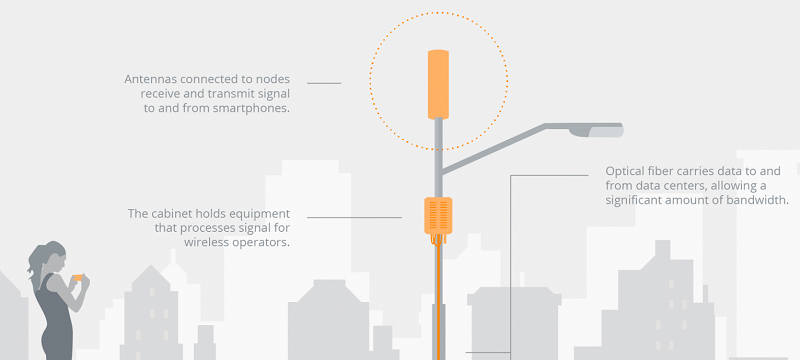
5G Small Cells - Is Australia Ready?
Mass Deployment of Small Cells – Is Australia Ready?
As Australia turns the corner into a 5G world a big question is: Can the required small cells be deployed in a practical and efficient manner?
While the mobile network operators (MNO’s) will, quite correctly, maximise their existing macro-based networks on towers and rooftops deploying massive MiMO and beamforming antennas, carefully using network slicing solutions and the like it is clear that small cells are going to be needed in Australia on a scale not yet seen. This is not yet urgent, but it is important and now is the time to make sure small cells can be rolled out smoothly – because the large numbers that will be required means that existing infrastructure owners need to be well prepared.
Currently, with the exception of TPG who seem committed to the use of small cells to roll-out their 4G/LTE network, the existing MNO’s primarily use small cells to provide coverage where a macro site cannot be deployed – with about 10 to 12 small cells taking the place of a single macro. Today’s small cell rentals are also about 10% of a macro site rent. The most common infrastructures being used are those of local Councils and the Utilities with streetlight poles, power poles and the odd bus-stop in the mix. This will change.
5G will progressively use spectrum ranges that mean range and building penetration will be difficult, so small cells will be needed to get the dedicated signals where they are needed – at and around street level. At first the MNO’s will use their macro layers (and these will always be a critical part of 5G) and then small cells in “digital precincts” – localised busy areas. Finally mass small cells will be deployed.
Councils and Utilities are going to be swamped with applications to install and the current low impact legislation is not going to help. Australia is about 12 to 18 months away from the start of these larger number small cell deployments and using lessons learnt in countries such as the US that already have experience of these deployments, here are 5 suggestions to help infrastructure owners cope with huge increase
1. Develop deployment standards – some things to include are what will be required in terms of access, small cell aesthetics, structural assessments, connecting fibre/power and will the small cell need any supporting cabinets at street level.
2. Decide now which assets can be used and, more importantly which may not be used and make sure the reasons for these decisions are valid and defendable.
3. Develop realistic commercial models – there will be great numbers of 5G small cells – rentals are not going to be huge, perhaps in the tens or hundreds of dollars a year. These are not going to be great revenue on their own – but in bulk they will be an attractive proposition – now is the time to get the leasing and rental formulas right with terms that consider future development / replacement of power poles and the like.
4. Tool up!! Make sure that you have the capability and the capacity to deal with this in advance – its not core business so consider engagement of a partner - tower leasing companies deal with the MNO’s every day and have the expertise and capacity in place
5. Consider neutral host models – where the small cells themselves are owned by an independent third party – usually a tower leasing company. This ensures that the council or utility is only dealing with one entity and that there is a consistency of standards and equipment – rather than each MNO deploying their solution. Most tower companies will also look at private / public partnerships (PPP) for the install of dedicated smart poles or upgrade existing light poles to LED /solar as part of a smart city strategy.
Above all act now – because if you don't you might just end up dealing with this mess on your poles.....

Research Analyst at Insight Partners Consultants
5yLatest Research Report on Global Smart Solar 2018 published by Orian Research. This report includes analysis of market size, share, trends, growth, investment plan, and 2025 Forecast. Get Sample Copy of this Report @ https://goo.gl/c3RH3x
Business Development
5yit is the way to go! www.acsys.com
Senior Director Segment Strategy - Broadband Networks
5yTom, here some considerations on powering these smallcells going forward. Interested to hear your thoughts! https://www.commscope.com/da/powering-the-future-of-small-cells-and-beyond/
Agile Project Managing Engineer (SAED/RF/EME) open to new opportunities.
5y... will councils support these, and become less strict??
State Asset Manager | Technology and Data Centers QLD & NT at TPG Telecom
5yOther aspects to consider is the maintenance of these sites after the roll out. Power poles are ok, however they introduce a large inherent risk and OH&S issue, power lines. This will require a specialized work force to access them to maintain and in the case of a fault, the turn around time may not be as achievable as traditional macro sites. That will also translate into higher maintenance costs, much the same as the current trend of "non-climbable" towers/poles.